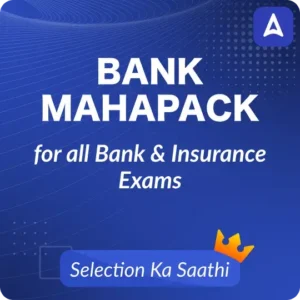DDA Syllabus 2023
DDA Syllabus 2023 is a must for candidates who wish to appear in the DDA Recruitment 2023. The syllabus comprises a list of topics from which questions are asked. The DDA Syllabus 2023 for has topics like Financial Accounting, Cost Management, and Taxations for Assistant Accounts Officers. Understanding the syllabus and exam pattern is crucial for effective and focused preparation. Here in this article, candidates can get the details of DDA Syllabus 2023 for all the posts.
DDA Syllabus
DDA Syllabus and Exam Pattern are the necessary tools required for the preparation of the DDA Exam 2023. The syllabus provides a crystal clear outline of the topics to prepare for the online examination. Through the exam pattern, aspirants get an idea of the sections, number of questions asked, maximum marks and time duration required for the examination. The DDA Syllabus and Exam Pattern may vary based on the specific post.
DDA Syllabus: Overview
Candidates can get an overview of DDA Syllabus along with the exam pattern in the table discussed below.
| DDA Syllabus 2023 Overview | |
| Organization | Delhi Development Authority |
| Exam Name | DDA Exam |
| No. of Posts | 687 |
| Job Location | Delhi |
| DDA Recruitment 2023 | 24 May 2023 |
| Mode of Application | Online |
| Official Website | www.dda.gov.in |
| DDA 2023 Syllabus | Check this Post in Hindi |
DDA Exam Pattern
The Exam Pattern for the DDA (Delhi Development Authority) may differ depending on the specific post applied for. It is important for effective time management that the candidates are aware of the DDA Exam Pattern. Here is the detailed post-wise DDA Exam Pattern.
| DDA Exam Pattern 2023 Assistant Section Officer | |||
|---|---|---|---|
| Subject | No. Of Questions | Marks | Duration |
| General Intelligence and Reasoning | 100 Questions | 200 Marks | 1 Hour |
| Quantitative Aptitude | |||
| General Awareness | |||
| English Comprehension | |||
In Stage 2 (Mains) of the DDA ASO Exam 2023, there will be four sessions.
| DDA ASO Exam 2023 Mains( Satge 2) | |||||
|---|---|---|---|---|---|
| Session | Section | Subject | No. Of Questions | Marks | Duration |
| I (02 Hours and 15 Minutes) |
I | Mathematical Abilities | 30 Questions | 90 Marks | 1 Hour |
| Reasoning & General Intelligence | 30 Questions | 90 Marks | |||
| II | English Language and Comprehension | 45 Questions | 135 Marks | 1 Hour | |
| General Awareness | 27 Questions | 75 Marks | |||
| III | Computer Knowledge (Qualifying in nature) | 20 Questions | 60 Marks | 15 minutes | |
| II(15 Minutes) |
Data Entry Speed Test (Qualifying in nature) | One Data Entry Task | 15 minutes | ||
| DDA Exam Pattern 2023 Architectural Assistant, Legal Assistant, Naib Tehsildar, Junior Engineer | |||
|---|---|---|---|
| Subject | No. Of Questions | Marks | Duration |
| Reasoning | 120 Questions | 120 Marks | 2 Hours |
| Quantitative Aptitude | |||
| General Awareness | |||
| English language | |||
| Respective Discipline | |||
| Interview | |||
| DDA Exam Pattern 2023 for various posts including Architectural Assistant, Legal Assistant, Naib Tehsildar, Junior Engineer (Civil), and Surveyor | |||
|---|---|---|---|
| Subject | No. Of Questions | Marks | Duration |
| Reasoning | 120 Questions | 120 Marks | 2 Hours |
| Quantitative Aptitude | |||
| General Awareness | |||
| English language | |||
| Respective Discipline | |||
Here is the DDA Exam Pattern for the Patwari post in 2023:
STAGE 1 (Preliminary):
| Subject | No. Of Questions | Marks | Duration |
|---|---|---|---|
| General Awareness | 120 Questions | 120 Marks | 2 Hours |
| General Intelligence & Reasoning Ability | |||
| Arithmetical & Numerical Ability | |||
| Hindi & English | |||
| Basic Computer knowledge |
STAGE 2 (Mains):
| Subject | No. Of Questions | Marks | Duration |
|---|---|---|---|
| General Awareness (Special Emphasis on Delhi) | 200 Questions | 200 Marks | 2 Hours |
| General Intelligence & Reasoning Ability | |||
| Arithmetical & Numerical Ability | |||
| English Language & comprehension | |||
| Hindi or Urdu language and comprehension | |||
| Basic Computer knowledge |
Here is the DDA Exam Pattern for the Junior Secretariat Assistant post in 2023:
Stage 1
| Subject | No. Of Questions | Marks | Duration |
|---|---|---|---|
| General Intelligence and Reasoning | 100 Questions | 200 Marks | 1 Hour |
| Quantitative Aptitude | |||
| General Awareness | |||
| English Language |
Stage 2 (Mains)
| Session | Section | Subject | No. Of Questions | Marks | Duration |
|---|---|---|---|---|---|
| I | I | Module I – Mathematical Abilities | 30 Questions | 90 Marks | 1 Hour |
| Module II – Reasoning & General Intelligence | 30 Questions | 90 Marks | |||
| II | Module I – English Language and Comprehension | 40 Questions | 120 Marks | 1 Hour | |
| Module II – General Awareness | 20 Questions | 60 Marks | |||
| III | Computer Knowledge (Qualifying in nature) | 15 Questions | 45 Marks | 15 minutes | |
| II (10 Minutes) | IV | Skill Test/Typing Test (Mandatory but Qualifying in nature) | Typing Test for JSA | – | 10 minutes |
DDA Syllabus 2023
DDA Syllabus 2023 varies for the different posts and candidates must have detailed knowledge of the post they are preparing for. Candidates can check below the topics covered in each section of DDA Syllabus 2023 post-wise.
DDA Syllabus 2023 For Assistant Accounts Officer
Financial Accounting
- Basic concepts of Accounting: single and double entry, Accounting concepts and conventions, Books of Original Entry, Bank Reconciliation, Journal, Ledgers, Trial Balance, Rectification of Errors, and Distinction between Capital and Revenue Expenditure.
- Bills of Exchange
- Depreciation Accounting
- Valuation of Inventories
- Adjusting and closing entries, Profit & Loss Accounts, Balance Sheet
- Accounts of Non-profit organizations—Receipts and Payments and Income & Expenditure
- Accounts and Balance Sheet
- Accounts from Incomplete Records
- Royalty and Lease accounts
- Branch and Department accounts
- Concepts of interim reporting, Segment reporting, Corporate Social Responsibility
- Accounting for Joint Ventures
- Analysis of Financial Statements: Ratio Analysis, Common-Size Statements, Comparative Statements, Trend Analysis, Funds Flow Analysis/Statements, Cash Flow Analysis/ Statements Section
- Introduction to Accounting Standards issued by the Institute of Chartered Accountants of India
- Uniform Format of Accounts for Central Autonomous Bodies, prescribed by Government of India.
Cost Management
- Cost Accounting Concepts
- Prime Cost: Materials, Labour and Direct Expenses
- Overheads – Office and Administration Overheads, Other Overheads
- Books of Accounts in Cost Accounting
- Cost Accounting Records Rules
- Reconciliation of Cost and Financial Accounts
- Job, Batch and Contract Costing
- Process Costing, Operation Costing and Operating Costing
- Production Accounts and Cost Sheets
- Marginal Costing, Differential Costs and Cost Volume Profit Relationship
- Standard Costing including Variance Analysis
- Capital Budgeting and Discounted Cash Flow Techniques
Taxation:(Income Tax)
- Assessment year, Previous year, Person, Assessee, Charge of income-tax, Income, Gross Total Income, Total income and tax liability, Agricultural Income, Difference between exemption and deduction, Definition of Manufacture, Capital Asset, Company, Fair market value, Capital receipts vs Revenue receipts, Capital expenditure vs Revenue Expenditure, Method of accounting, Residential status of Individual & Company, Relation between residential status and incidence of tax, Receipt & Accrual of income, Income deemed to accrue or arise in India.
- Income Computation and Disclosure Standards (ICDS).
- Profits and gains of business or profession – Principles and Computation: Chargeability, General principles governing assessment of business income, Method of accounting, Scheme of deductions and allowances, Depreciation
- Capital gains – Principles and Computation: Meaning of capital asset, Transfer of capital asset, Computation of capital gain, Full value of consideration, Expenditure on transfer, Cost of acquisition, Cost of improvement, indexed cost of acquisition and indexed cost of improvement, Problems on computation of Long Term Capital Gains (LTCG) Tax.
Taxation:(GST)
- Constitutional Aspects, GST Council, Administration of GST, Assessment and Audit, Dual GST Model, GST (Compensation to States) Act, 2017 GST Network,
- Levy and collection of CGST & IGST – Application of CGST/IGST law, concept of supply including composite and mixed supplies, inter-State supply. intra-State supply, supplies in territorial waters, charge of tax, exemption from tax, composition levy. Distribution of IGST,
- Place of supply, time and value of supply,
- Input Tax Credit, Computation of GST Liability, Procedures of GST – registration, tax invoice, credit and debit notes, electronic way bill, accounts and records, returns, payment of tax including reverse charge, refund, job work, provisions relating to e-commerce, GST Forms.
Miscellaneous
- Audit objectives, scope of Audit and Auditing Standards.
- Government Budgeting and Budget Management.
- Knowledge of Information Technology including MS Office and Accounting Software.
DDA Syllabus 2023 For Assistant Section Officer
General Intelligence & Reasoning
Analogies, similarities and differences, space visualization, spatial orientation, problem solving, analysis, judgment, decision making, visual memory, discrimination, observation, relationship concepts, arithmetical reasoning and figural classification, arithmetic number series, non-verbal series, coding and decoding, statement conclusion, syllogistic reasoning etc. The topics are, Semantic Analogy, Symbolic/Number Analogy, Figural Analogy, Semantic Classification, Symbolic/Number Classification, Figural Classification, Semantic Series, Number Series, Figural Series, Problem Solving, Word Building, Coding & de-coding, Numerical Operations, symbolic Operations, Trends, Space Orientation, Space Visualization, Venn Diagrams, Drawing inferences, Punched hole/ pattern- folding & un-folding, Figural Pattern-folding and completion, Indexing, Address matching, Date & city matching, Classification of centre codes/roll numbers, Small & Capital letters/numbers coding, decoding and classification, Embedded Figures, Critical thinking, Emotional Intelligence, Social Intelligence.
General Awareness
Current Affairs, History, Culture, Geography, Economic Scene, General Policy and Scientific Research.
Quantitative Aptitude
Computation of whole numbers, decimals, fractions and relationships between numbers, Percentage. Ratio & Proportion, Square roots, Averages, Interest, Profit and Loss, Discount, Partnership Business, Mixture and Allegation, Time and distance, Time & Work, Basic algebraic identities of School Algebra & Elementary surds, Graphs of Linear Equations, Triangle and its various kinds of centres, Congruence and similarity of triangles, Circle and its chords, tangents, angles subtended by chords of a circle, common tangents to two or more circles, Triangle, Quadrilaterals, Regular Polygons, Circle, Right Prism, Right Circular Cone, Right Circular Cylinder, Sphere, Hemispheres, Rectangular Parallelepiped, Regular Right Pyramid with triangular or square base, Trigonometric ratio, Degree and Radian Measures, Standard Identities, Complementary angles, Heights and Distances, Histogram, Frequency
polygon, Bar diagram & Pie chart.
English Language and Comprehension
Vocabulary, grammar, sentence structure, synonyms, antonyms and their correct usage; Spot the Error, Fill in the Blanks, Synonyms/ Homonyms, Antonyms, Spellings/ Detecting mis-spelt words, Idioms & Phrases, One word substitution, Improvement of Sentences, Active/ Passive Voice of Verbs, Conversion into Direct/ Indirect narration, Shuffling of Sentence parts, Shuffling of Sentences in a
passage, Cloze Passage, Comprehension Passage.
Computer Knowledge
- Computer Basics: Organization of a computer, Central Processing Unit (CPU), input/ output devices, computer memory, memory organization, back- up devices, PORTs, Windows Explorer. Keyboard shortcuts.
- Software: Windows Operating system including basics of Microsoft Office like MS word, MS Excel and Power Point etc.
- Working with Internet and e-mails: Web Browsing & Searching, Downloading & Uploading, Managing an E-mail Account, e-Banking.
- Basics of networking and cyber security: Networking devices and protocols, Network and information security threats (like hacking, virus, worms, Trojan etc.) and preventive measures.
DDA Syllabus 2023 For Architectural Assistant
Architectural Design Theory & Practice
Meaning of design, Appreciation of beautiful objects, Design in everyday life, Logic in design, Elements of design- line, form, color texture, Principles of design- unity, variety, hierarchy, Scale and proportions, Balance, emphasis, Focus, fashion, decoration, Basic design and architectural design- Elemental Differentiation, Perception and experience, Tangible and intangible in architecture, Function, structure and form, Space, space usage and interrelationship of spaces, Circulation within Spatial Units, Horizontal Circulation, Vertical Circulation, Circulation and Spaces, between buildings, Relationship of plan, section and elevation, Architectural scale, Programming in Architectural design, Site Planning, Urban Design, and Project Management.
Building Construction, Surveying & Structure
Building Materials, Building Technology & Innovations, Surveying methods, Specifications, Estimating & Costing, Working Drawings/GFC, Sections, Toilet & Staircase details, Door & window schedules, Surveying, Retrofitting, Basic Structure, Basic components of “building”, Role of Construction in Architecture, Brick as a structural material, Stones as a building material, Stone masonry construction, Basic structural design elements, Definition and concepts: Instruments used; acquaintance with electronic surveying instruments, Principles of surveying, Unit of Measurements, Chain surveying, Compass Surveying, Leveling, Contouring: Topographic maps, Plain tabling, Marking foundations, Measuring building under construction.
DDA Syllabus 2023 PDF
Here candidates can download the PDF of the DDA Syllabus 2023. The syllabus in PDF format will be convenient for candidates. The DDA Syllabus 2023 is now available through the link given below.

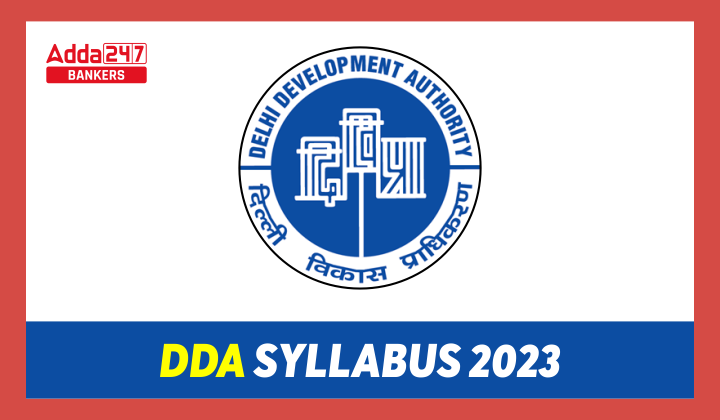



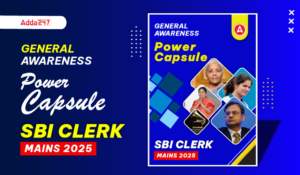 GA Capsule for SBI Clerk Mains 2025, Dow...
GA Capsule for SBI Clerk Mains 2025, Dow...
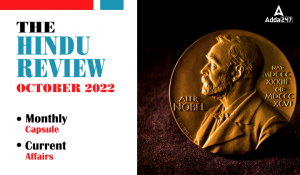 The Hindu Review October 2022: Download ...
The Hindu Review October 2022: Download ...
 IB ACIO 2025 Notification PDF Out for 37...
IB ACIO 2025 Notification PDF Out for 37...

